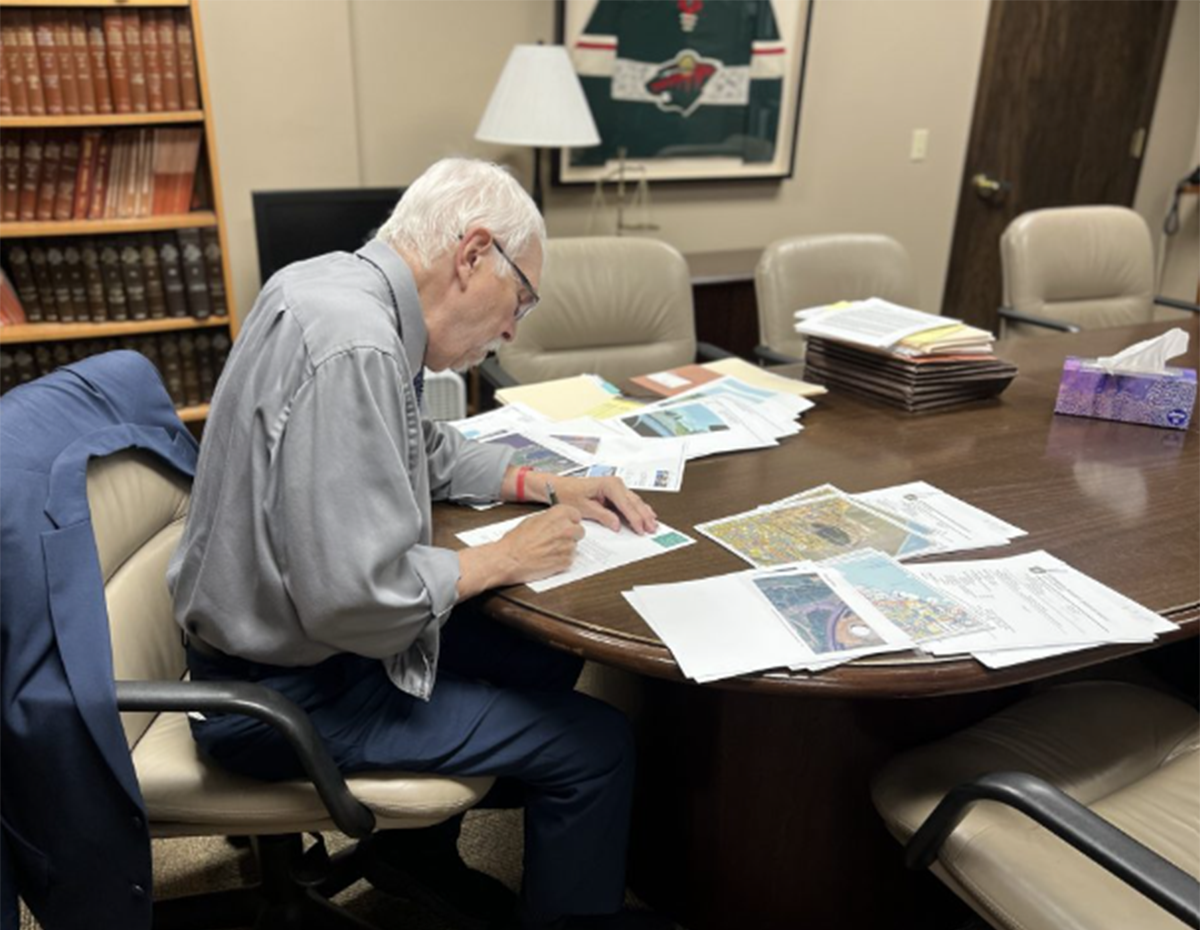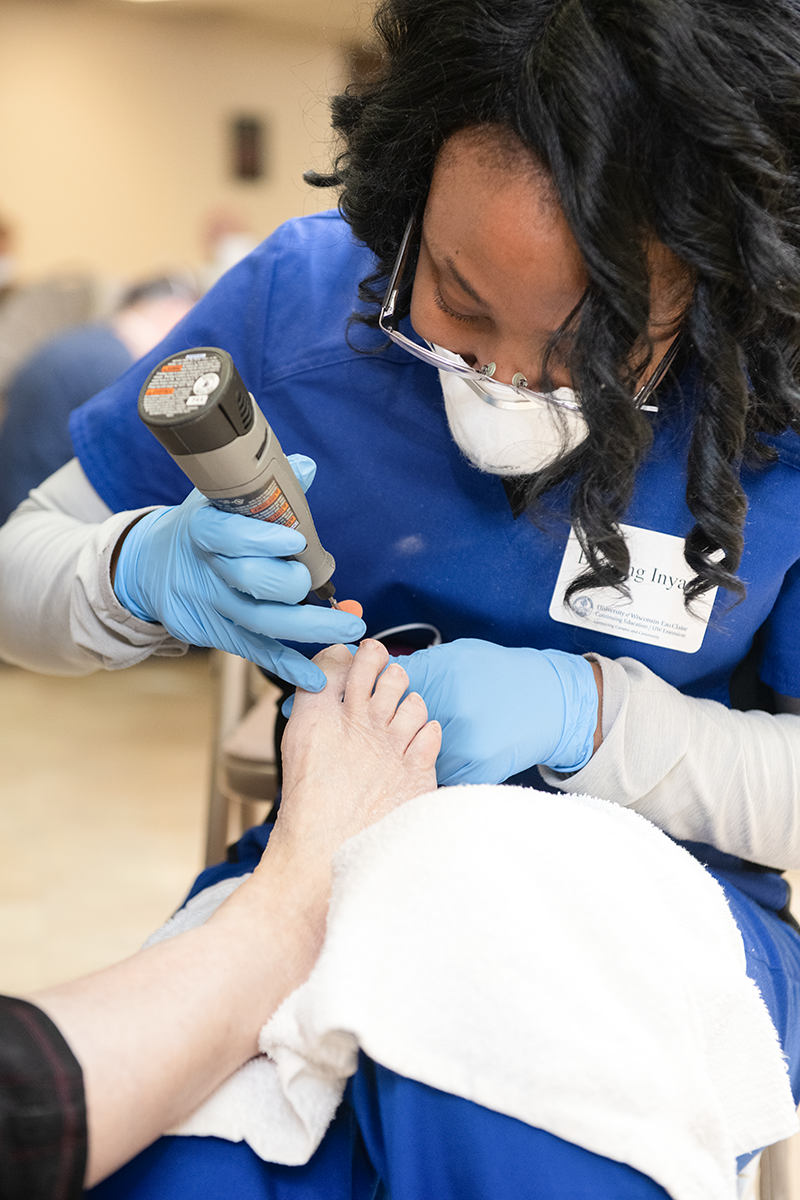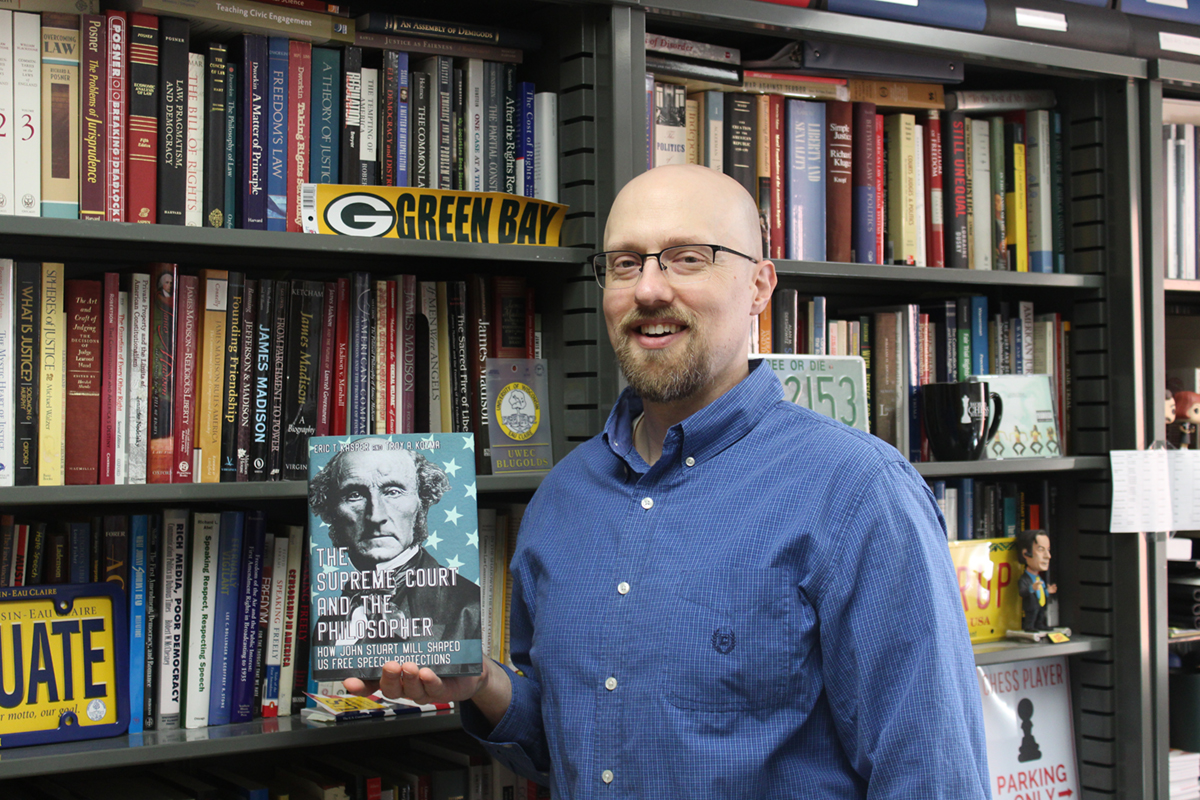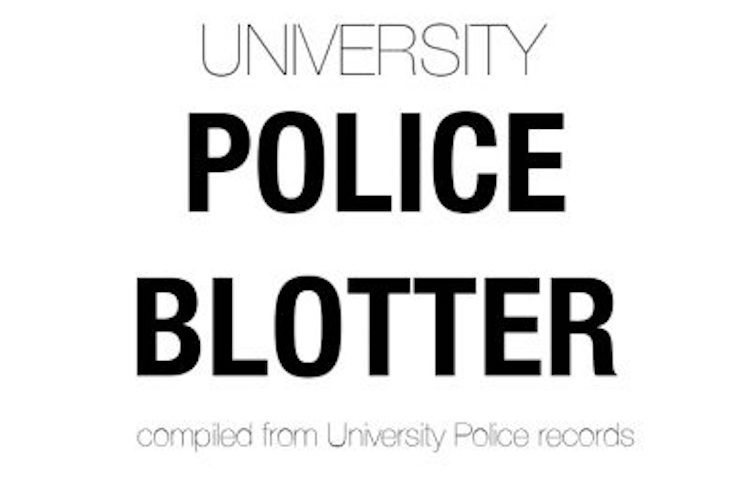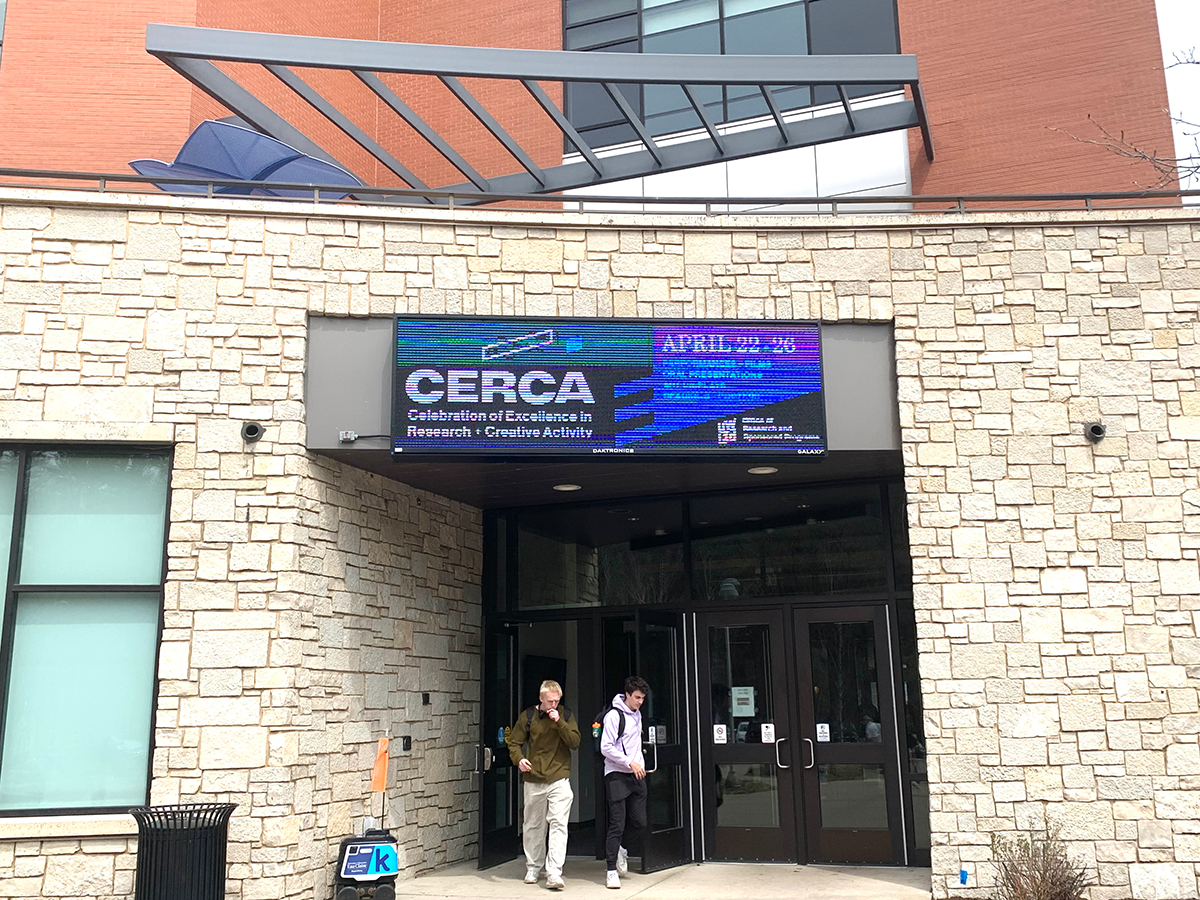 Molly Tumanic
Molly TumanicNearly a month ago, Eau Claire was subject to heavy snowfalls that created numerous problems for drivers and city maintenance workers alike.
With the snow melting away, the previously slick conditions are creating a new dilemma – potholes.
After driving through Eau Claire – mainly on Clairemont Avenue and Hastings Way – sophomore Amy Koecheler said she isn’t pleased with the situation.
“It is frustrating to drive on a main road (in Eau Claire),” Koecheler said. “It feels as though I’m on a bumpy roller coaster.”
Koecheler, a special education major, said potholes have caused damage to her vehicle.
“My car has bottomed out in one pothole and I have had to get my wheels rebalanced,” she said.
Brian Amundson, public works director for the City of Eau Claire, said the city is aware of the problem. Weather conditions have been the main factor behind the potholes, he said.
Potholes form when water seeps through cracks in the asphalt, Amundson said. With recent fluctuating weather conditions, the water freezes underneath, expanding the pavement. Once the ice melts, the pavement is weakened. Constant pounding from vehicles above eventually creates the holes.
The freezing and thawing combination, he said, “creates a recipe for potholes.”
While many citizens voice complaints about Clairemont and Hastings, Amundson said he directs these to the county. Those roads are highways, and are therefore not the city’s responsibility.
Tom Beekman, the Wisconsin Department of Transportation’s District 6 systems planning and operations chief, said the main problem with Eau Claire highways is their age.
“Hastings and Clairemont are old roads,” he said. “(The potholes) are going to be an annual issue.”
A material called cold-patch asphalt, which seals the potholes temporarily, helps with the issue. But it is only a temporary solution, Beekman said.
For the asphalt mix to stick in the holes, he said, the conditions must be warm and dry. Due to the moisture and extensive traffic, the material doesn’t hold up well.
“There’s a short time duration under those conditions,” Beekman said.
While many street workers are criticized for sub-par work, Beekman said these workers sometimes fill the holes three to four times a day. Some are working overtime, he said, due to their previous efforts from snow removal.
“Late winter, early spring is the worst from a maintenance perspective,” he said.
The problem is not limited to the state highways or the city. UW-Eau Claire has the same problem along one of its most frequently used roads, Garfield Avenue.
Facilities Planning and Management grounds supervisor Randy Palmer said the university also uses the cold-patch technique to fix potholes. Permanent repairs are not necessary right now, he said.
With the riverbank stabilization project taking place during the summer, Palmer said Garfield will suffer extensive damage. Therefore, it will be useless to refurbish it until the project is complete.
“We’re going to have big equipment in there,” he said. “There’s no need to repair it now.”
Permanent repairs are necessary for city streets, Amundson said.
“If you want to replace potholes, you need to rebuild the streets,” he said.
Rebuilding the streets, he said, isn’t a simple procedure. The annual city budget for asphalt and materials is $110,000. The only time to do permanent repairs is during the summer months because of material availability, Amundson said.
Amundson said the city has had success fixing pothole problem areas. Through the annual street reconstruction program, the city fixes about eight to 10 miles of road.
Beekman said permanent solutions for the state highways are planned, but will not take effect until 2007.
“It may be bumpy and rough (on the main roads) for the next few springs,” Beekman said.

